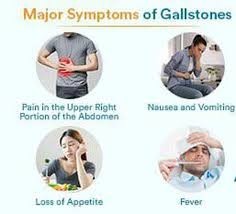The nurse will plan to teach a patient who has pernicious anemia about the need for:
Oral ferrous sulfate tablets.
Cobalamin (B) Injections.
Iron dextran infusions
Routine blood transfusions.
The Correct Answer is B
Pernicious anemia is a type of anemia that occurs due to a lack of intrinsic factor, a protein necessary for the absorption of vitamin B12 (cobalamin) in the digestive system. As a result, patients with pernicious anemia are unable to absorb sufficient amounts of vitamin B12 from dietary sources. The treatment for pernicious anemia involves regular administration of cobalamin (B12) injections to bypass the impaired absorption and provide the necessary vitamin B12 directly.
Oral ferrous sulfate tablets are not the appropriate treatment for pernicious anemia. Ferrous sulfate is a form of iron supplement used to treat iron deficiency anemia, which is different from pernicious anemia.
Iron dextran infusions are also not indicated for pernicious anemia. Iron dextran is used for iron replacement therapy in cases of iron deficiency anemia, but it does not address the underlying issue of vitamin B12 deficiency in pernicious anemia.
Routine blood transfusions may be necessary in some cases of pernicious anemia, especially if the patient is severely anemic. However, the primary treatment for pernicious anemia is cobalamin (B12) injections, which provide the necessary vitamin B12 that the patient is unable to absorb.
Nursing Test Bank
Naxlex Comprehensive Predictor Exams
Related Questions
Correct Answer is D
Explanation
Cholelithiasis refers to the presence of gallstones in the gallbladder or bile ducts. The most common symptom is right upper quadrant abdominal pain, which may be colicky or steady. Nausea and vomiting are also commonly associated with cholelithiasis.
Coffee ground emesis and constipation are not typical findings associated with cholelithiasis. Absent bowel sounds may be a sign of bowel obstruction but are not specific to cholelithiasis.

Correct Answer is D
Explanation
Celiac disease is an autoimmune disorder characterized by an abnormal immune response to gluten, a protein found in wheat, barley, and rye. When individuals with celiac disease consume gluten, their immune system reacts by damaging the lining of the small intestine, specifically the villi. The damaged villi are unable to effectively absorb nutrients from food, leading to malabsorption and a variety of symptoms.

Whether you are a student looking to ace your exams or a practicing nurse seeking to enhance your expertise , our nursing education contents will empower you with the confidence and competence to make a difference in the lives of patients and become a respected leader in the healthcare field.
Visit Naxlex, invest in your future and unlock endless possibilities with our unparalleled nursing education contents today
Report Wrong Answer on the Current Question
Do you disagree with the answer? If yes, what is your expected answer? Explain.
Kindly be descriptive with the issue you are facing.
